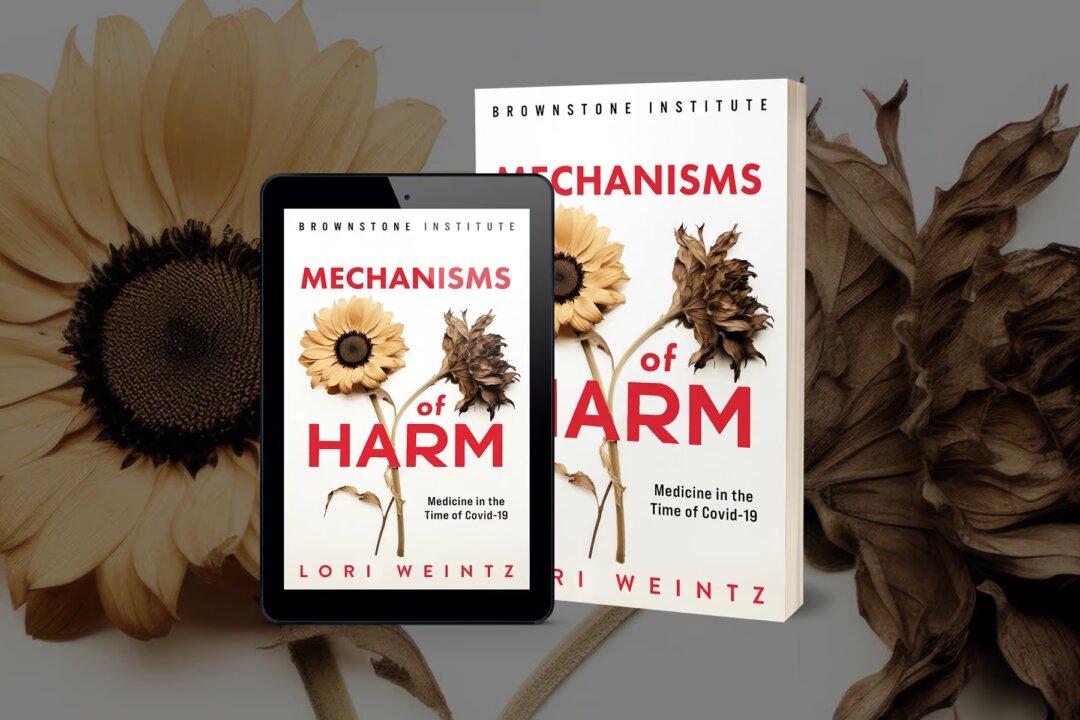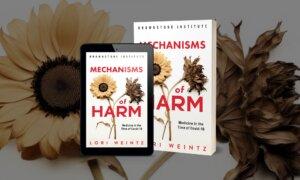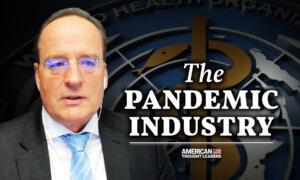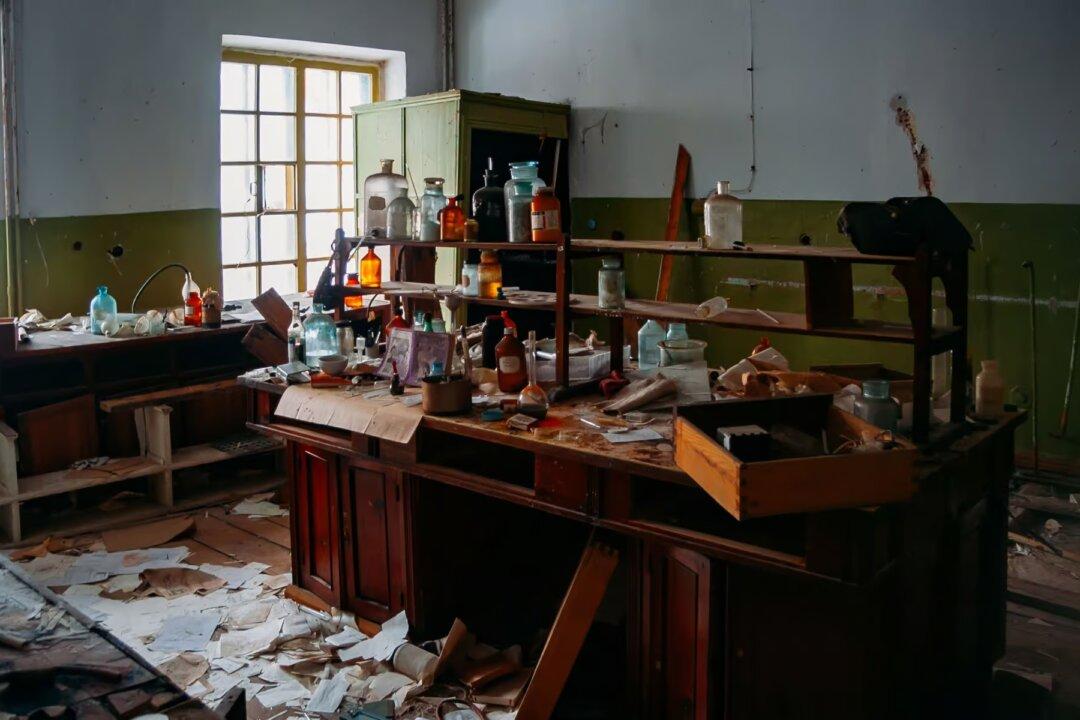[The following is Chapter One of Lori Weintz’s book, “Mechanisms of Harm: Medicine in the Time of Covid-19.”] “It is sad that the shutdown will be harder for poorer countries than richer countries.” — Bill Gates, TED interview, March 24, 2020
“Public health can never be about just one illness; it has to be about the health of the population as a whole.” —
Dr. Aaron Kheriaty, scholar on medical ethics
An epidemic is an outbreak of disease that spreads quickly and affects many individuals at the same time. A pandemic is an epidemic that was once localized but is now appearing in other countries and even on other continents. The difference between an epidemic and pandemic isn’t in the severity of the disease, but the degree to which it spreads.
Before COVID-19 there had been other pandemics. But in the past 100 years, with the exception of the Spanish flu in 1918, the other pandemics came and went without much notice for the majority of the world’s population. For example, much press coverage of the first
SARS in 2003 neglected to report there were only 774 total deaths worldwide. Likewise, the heightened reporting of the
2012 MERS pandemic failed to summarize that there were only 858 total deaths. In contrast, recurring
influenza strains kill an average of 400,000 people worldwide each year.
In January 2020, when we started to hear reports of a new respiratory virus in China, something was different. Those images of people dropping dead in the street, and the modeling from the Imperial College of London forecasting millions of deaths if we didn’t take drastic measures, set us on an unprecedented pandemic-response course.
But while disoriented citizens worldwide were coming to terms in March 2020 with the statement, “There is a pandemic,” enforced by the dramatic shutdown for “two weeks to slow the spread,” others did not appear to be so taken aback. If nothing else, what most of us saw as an unprecedented calamity, they saw as an anticipated opportunity.
‘We Can Make Radical Changes to Our Lifestyles’
The
World Economic Forum (WEF), long having watched for a global crisis to further its agenda of a “
Great Reset” of capitalism declared, “One silver lining of the pandemic is that it has shown how quickly we can make radical changes to our lifestyles.”
WEF Founder Klaus Schwab stated, “The pandemic represents a rare but narrow window of opportunity to reflect, reimagine, and reset our world.” Schwab lectured that the Great Reset “will require stronger and more effective governments ... and it will demand private-sector engagement every step of the way.” All voluntary and for the greater good, of course. (Later in the pandemic, the Great Reset was rebranded Build Back Better, but the phrases are basically interchangeable.) Interestingly, while many in leadership seemed to be using the same words and talking points, anyone who pointed this out was called a conspiracy theorist, as shown in the following clip:
VIDEO
The WEF’s stance could be considered the quirky views of a few wealthy elites, if it were not for the fact that so many government and corporate leaders are affiliated with the organization. At the beginning of the pandemic, the WEF’s stated intent was that “15 days to slow the spread” would mean “radical changes to our lifestyles”—forever.
Bill Gates—Anticipates Vaccinating the Whole World
At the same time the WEF was busy reimagining our world, philanthrocapitalist Bill Gates enthusiastically shared his certainty in both a
March 2020 interview and another in
April that everyone would need to be vaccinated before the world could reopen and return to normal. This idea fit conveniently into Gates’ worldview, where vaccines and pandemics
are an investment opportunity, and public health is mostly about anticipating the next deadly virus.
The Bill & Melinda Gates Foundation, along with the WEF, and other partners, is one of the founders of the Coalition for Epidemic Preparedness Innovations (
CEPI). CEPI’s website states it is “an innovative global partnership working to accelerate the development of vaccines against epidemic and pandemic threats.” One of its goals is the
100 Days Mission to deliver a vaccine in 100 days against the next disease, “to give the world a fighting chance to extinguish the existential threat of a future pandemic virus.”
CEPI’s mission aside, viruses and bacteria have not been considered an “existential threat” to humanity for the most part, but simply a part of the
microbial planet we inhabit. COVID-19 was known early on to impact the elderly and those with chronic health issues. Healthy people and the young were at very little risk for serious outcomes, but somehow the narrative of COVID-danger took off like wildfire. A certain pandemic playbook was being implemented.
Pandemic Wargames
The Bill & Melinda Gates Foundation has been a big player in
pandemic wargames during the past 20 years. In fact, the Gates Foundation, World Economic Forum, and Johns Hopkins University, among other players, had just completed
Event 201 in October 2019, in which they simulated a severe coronavirus pandemic. Participants in Event 201 were from governments (including the Chinese government), public health, Big Pharma, media, finance, public relations, and academia.
As with previous disease wargames, a large focus of the Event 201 simulation involved control of citizens during the pandemic. The simulation covered “how to use police powers to detain and quarantine citizens, how to impose martial law, how to control messaging by deploying propaganda, how to employ censorship to silence dissent, and how to mandate masks, lockdowns, and coercive vaccinations and conduct track-and-trace surveillance among potentially reluctant populations.” (“The Real Anthony Fauci,” by Robert F. Kennedy, Jr., Chapter 12 Germ Games, p. 382, and Event 201 p.426–435)
Each of these pandemic simulations ends with coerced mass vaccination to conquer the virus. The human immune system, which has effectively interacted with the microbial world from the beginning of time, is not considered a significant player in the virus-to-vaccine worldview. Many of the people who participated in Event 201 pivoted to being key players in the COVID-19 official pandemic response, mirroring what they had practiced.
The World in 2019—Poverty and Hunger at Their Lowest Ever
While those conducting 20 years’ of virtual pandemic wargames were focused on vaccines, the real world made great strides in handling disease and poverty in more organic ways. Improvements in sanitation, clean water, nutrition, education, and increasing access to safe and inexpensive energy sources all contributed to better health worldwide. During the past century, the advent of antibiotics, and advances in diagnostics and surgery skills also increased life expectancy and quality of life.
Prior to the COVID-19 pandemic, poverty, and hunger were decreasing throughout the world, due in part to all these advances, and also because of the interconnected world economies.
During the pandemic, government and public health leaders imposed
sanctions and mandates, at the expense of all other aspects of human health and well-being, that have
slowed and even reversed much of that progress.
“Over the past 40 years, the world’s economies globalized, becoming more interdependent. At a stroke, the lockdowns broke the promise the world’s rich nations had implicitly made to poor nations. The rich nations had told the poor: Reorganize your economies, connect yourself to the world, and you will become more prosperous. This worked, with 1 billion people lifted out of dire poverty over the last half-century.
“But the lockdowns violated that promise. The supply chain disruptions that predictably followed them meant millions of poor people in sub-Saharan Africa, Bangladesh, and elsewhere lost their jobs and could no longer feed their families.”
Far from recognizing the tremendous harms inflicted by their dystopian and totalitarian views and policies,
the Schwabs and Gateses of the world are pushing for increased top-down control of people in all areas of their lives.Moderna and Worldwide Vaccine Production Factories
Moderna is ramping up the construction of
mRNA vaccine factories all over the world, while fear-mongers and profiteers assure us there will be
another pandemic soon. They insist we must continue to
fund gain-of-function research. Gain-of-function is a term referring to the modification of a virus, through laboratory experimentation, to make it more contagious and/or more virulent. The theory is that we manufacture dangerous viruses in the lab, so we can develop vaccines that counter them—just in case an enemy has the same idea. Gain-of-function is controversial research and those who continue to promote it are apparently ignoring the now widely acknowledged possibility that the SARS-CoV-2 virus escaped from a lab. (see
here,
here, and
here)
WHO Wants Top-Down Control in Future Pandemics Worldwide
The World Health Organization (WHO) has presented changes to the International Health Regulations (IHR) treaty that will
allow it to impose a response on any country where it identifies a health threat, or
potential threat, without consulting the people or their government. On September 20, 2023, the UN issued a
Declaration to back the WHO whenever it declares a viral variant to be a “public health emergency of international concern.” (It should be noted that because Bill Gates is the
second largest donor to the World Health Organization, just behind the US, he has an outsized
influence on the
WHO’s focus and resource allocation.)
Those who imposed lockdowns, mask mandates, and segregation of the unvaccinated have doubled down on their insistence that they handled everything just right—except for maybe they should have done it all sooner and harder. The
European Commission and the WHO have announced a “digital health” partnership to establish a
Digital Vaccine Passport system as a way of tracking every citizen in the world.
“What we are up against is not a misunderstanding or a rational argument over scientific facts. It is a fanatical ideological movement. A global totalitarian movement ... the first of its kind in human history.” — C.J. Hopkins, author & playwright,
Oct. 13, 2020Fauci Calls Lockdowns ‘Inconvenient,’ Says a Vaccine Is Coming Soon
While Schwab and Gates shared their enthusiasm for harsh pandemic measures
, Dr. Anthony Fauci, then director of the National Institute of Allergies and Infectious Diseases (NIAID) participated in a
Facebook interview with Mark Zuckerberg on March 19, 2020, three days into “flatten the curve.” In talking about the lockdown, Fauci,
with almost psychopathic understatement, termed the unprecedented physical separations of people, and closures of everything, “inconvenient,” and “disruptive of society.” Then he dropped a bombshell, “At the end of 15 days we’ll reevaluate and see if what we’ve done has any noticeable impact .... I project we will go longer than two weeks. It doesn’t just turn around over a week and a half or two.”
Fauci also explained to Zuckerberg that not only was a vaccine being developed (he expected one ready to use within 18 months), but there were therapeutics that would treat COVID-19 disease in the meantime. He specifically mentioned two by name: Hydroxychloroquine (HCQ), and Remdesivir. With regard to HCQ Fauci said, “There’s a lot of buzz on the internet about…hydroxychloroquine [a drug that] has been approved for decades, very cheap, used in malaria and certain autoimmune diseases.”
Dr. Fauci failed to mention that the National Institutes of Health (NIH) of which NIAID is a part, found in a
2005 study during the first SARS pandemic, that
chloroquine (
a precursor to HCQ) was a “
potent inhibitor of SARS coronavirus infection and spread” in cell culture studies. (emphasis added) Chloroquine had also shown promise against MERS in vitro (test tube).
Prior to COVID-19, HCQ was a well-established drug known to have few side effects, and almost no interactions with other drugs. Available over-the-counter in many countries including France, India, Mexico, and many African nations, HCQ had been on the World Health Organization’s list of Essential Medicines (meaning it is required to be inexpensive and readily available) for decades
(see WHO list p. 55), and had been taken safely by billions of people.
Perhaps Fauci didn’t mention the great potential of chloroquine because prophylactics (preventative drugs) and therapeutics (drugs that treat disease) were not really on his radar. The real focus was soon to be President Trump’s Operation Warp Speed—the rapid development of a COVID-19 vaccine—which was already well under way. But making some money off of expensive therapeutics, such as remdesivir, also appears to have been appealing.
Views expressed in this article are opinions of the author and do not necessarily reflect the views of The Epoch Times.




